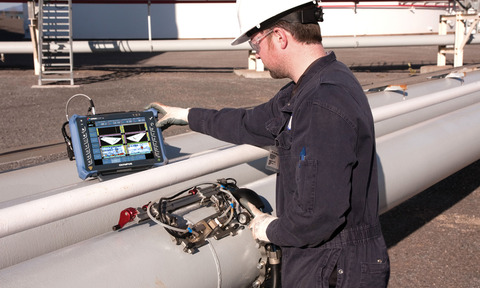The best approach to achieve sustainable manufacturing
24 Mar 2023

Measurement is the key to reducing carbon footprint, explains Novotek’s Sean Robinson.
The layperson might assume that manufacturers are not sufficiently bothered about reducing their carbon footprint, but carbon is often a proxy for various forms of cost. Manufacturers want to optimise their operations, they don’t want to be wasting energy, raw materials or product.
There are many measures that can be taken that are obvious and straight forward. Replace the lighting in your facility with LED lighting, introduce low flush toilets, install double glazing at head office. These options are all obvious but not especially impactful.
Using wind turbines or solar panels to take part of a facility’s operations off grid has more of a structural impact, but the capital expenditure can sometimes be difficult for a chief financial officer to justify, even if the measures pay for themselves in the long run.
Manufacturers can quickly find themselves stuck once those more obvious measures have been invested in. What else can they do?
A great example to illustrate the power of thinking and operating holistically comes from my home nation of Canada. We Canadians have become accustomed to what I would describe as mildly runny yoghurt, but it wasn’t always thus. We like yoghurt that is slightly runnier than what we used to because a very intelligent product manager at a dairy manufacturer approached his operations in a holistic way.
The lever you are missing is measurement. Measure first, then let the results guide further investigation of more advanced areas
Viscous yoghurt required more energy to push through the pump network. It also necessitated more chemicals and water to clean it out of the processing and filling equipment. By changing the product formula and reducing the viscosity, the manufacturer would have a product that was cheaper and less energy-intensive to produce. The change in product design was introduced incrementally and was explicitly tied to the development of a more environmentally sustainable product.
Consumers may be fickle, but the manufacturer communicated well and shared stories about the environmental benefits of the changes. Over time Canadians have become more accustomed to a slightly runnier yoghurt, but one that is produced using less energy and fewer chemicals.
Here the lever is measurement. They knew how much energy they were using to push yoghurt through the system, how much water they were using to clean it out and how much energy they were using heating the water to produce steam. These were simple questions, but with a layer of automation they could dump all the data from the water meters, chemical dosing meters and energy meters and measure these and trend them for different product types. The relationship shown through these correlations was not linear. When you increased the viscosity of the yoghurt, you created an exponential increase in the energy required.
Someone else approaching it from a different angle can repurpose the same data collection architecture and discover additional areas where operations could be optimised.
Having data on the health of your assets is key to this. A fairly common one in process industries is getting data from the boiler system and the various filters and valves and finding that your boiler control algorithms are not as healthy as they could be. The data from the boiler can be used to analyse what level of heat you require for different products, so you only use the heat you actually need.
There are a few reasons people don’t already pursue these steps to the extent they ought to. If you do not have the right data collection infrastructure in place to make it easy to accumulate data and repurpose that infrastructure for things you haven’t thought of yet, you might think that each project needs its own new, unique investment.
Manufacturers and industrial consumers often begin with thinking about what is large and tangible. They look to buy pieces of equipment that are inherently more efficient, especially if this is obvious, nondisruptive to operations and affordable. However, they quickly run out of levers if this is their only port of call and are left wondering what else they can do.
Novotek’s experience has shown us that the machines you already own often contain a lot of useful data that can become the basis for a series of other meaningful and impactful changes, when you begin to see the fundamental interconnectedness of your operations. The lever you are missing is measurement. Measure first, then let the results guide further investigation of more advanced areas. You might very well find you already own all of the tools and tech needed to act upon what the measuring tape is telling you.
Sean Robinson is manager of software and services at Novotek

